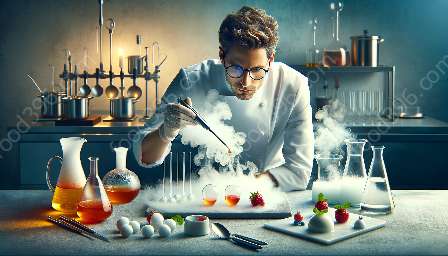Molecular gastronomy techniques have revolutionized the way we think about food and cooking. This innovative approach to culinary arts combines science and creativity to produce dishes that are as visually stunning as they are delicious. In this comprehensive guide, we will explore some of the key techniques used in molecular gastronomy, including spherification, gelification, and foams, and delve into the science behind these processes.
Spherification
Spherification is a technique that involves shaping liquid into spheres. There are two main types of spherification: basic spherification and reverse spherification. Basic spherification involves using sodium alginate to create spheres when exposed to a calcium-rich solution. Reverse spherification, on the other hand, uses calcium lactate to form spheres when submerged in an alginate bath. This technique allows chefs to create flavorful and visually appealing caviar-like spheres that burst with liquid when eaten.
Gelification
Gelification is another fundamental technique in molecular gastronomy. It involves using gelling agents such as agar-agar and gelatin to transform liquids into solid or semi-solid textures. By carefully controlling the amount of gelling agent and the setting process, chefs can create a wide range of textures, from firm gels to delicate gel sheets, adding layers of complexity to dishes.
Foams
Foams are a popular molecular gastronomy technique that introduces airy, ethereal textures to dishes. By using a whipping siphon or an immersion blender, chefs can create stable foams from a variety of ingredients, including fruits, herbs, and even savory elements like bacon. Foams can add both visual interest and subtle flavors to plates, making them an essential tool in the modern chef's arsenal.
Emulsification
Emulsification is a process of mixing two or more liquids that are normally immiscible, such as oil and water. In molecular gastronomy, chefs use emulsification to create stable suspensions of ingredients, resulting in creamy and velvety textures. By carefully balancing the components and using emulsifying agents, chefs can produce emulsions that enhance the overall mouthfeel and flavor of a dish.
Carbonation
Carbonation is a technique that infuses liquids with carbon dioxide, creating effervescent and refreshing sensations. In molecular gastronomy, chefs can use carbonation to carbonate liquids such as fruits, cocktails, and even savory elements like vinegars. This technique brings a new dimension to beverages and dishes, adding an unexpected element that delights the palate.
Cryogenics
Cryogenics involves using extremely low temperatures, often with the help of liquid nitrogen, to manipulate the textures of ingredients. Chefs can rapidly freeze and shatter ingredients, creating delicate powders or crisp textures. This technique is particularly useful for creating frozen desserts with a unique mouthfeel and presentation.
Conclusion
Molecular gastronomy techniques have opened up a world of possibilities for chefs, allowing them to push the boundaries of traditional cooking and create truly innovative culinary experiences. By understanding the science behind these techniques and experimenting with different ingredients and methods, chefs can elevate their dishes to new heights, delighting diners with mesmerizing textures, flavors, and presentations.

